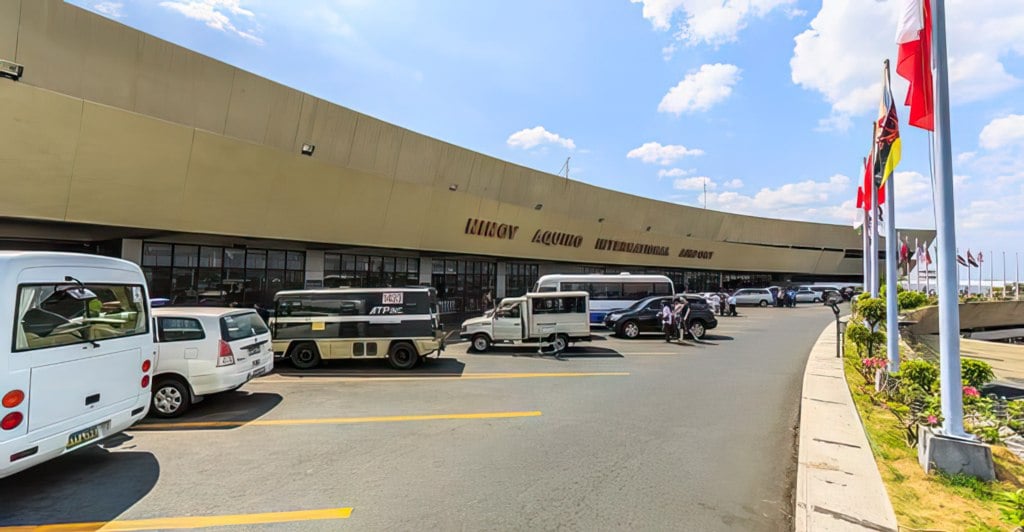Manila Airport, otherwise known as NAIA is one of the most confusing and intimidating airports in the world. This is mostly due to its scattered terminals and taxi scams…
On top of that, there’s also little information available online, which makes it hard to prepare.
To remedy that I’ve created this guide. In it I distill all my local knowledge and added research into one easy to read page, so that you can prepare well, and travel through without a hitch.
Note : Due to changes in Manila, some details in this guide may be out-of-date. Updates are underway. That said, the guide should still be quite helpful and informative in its current form.
About NAIA and the Terminals
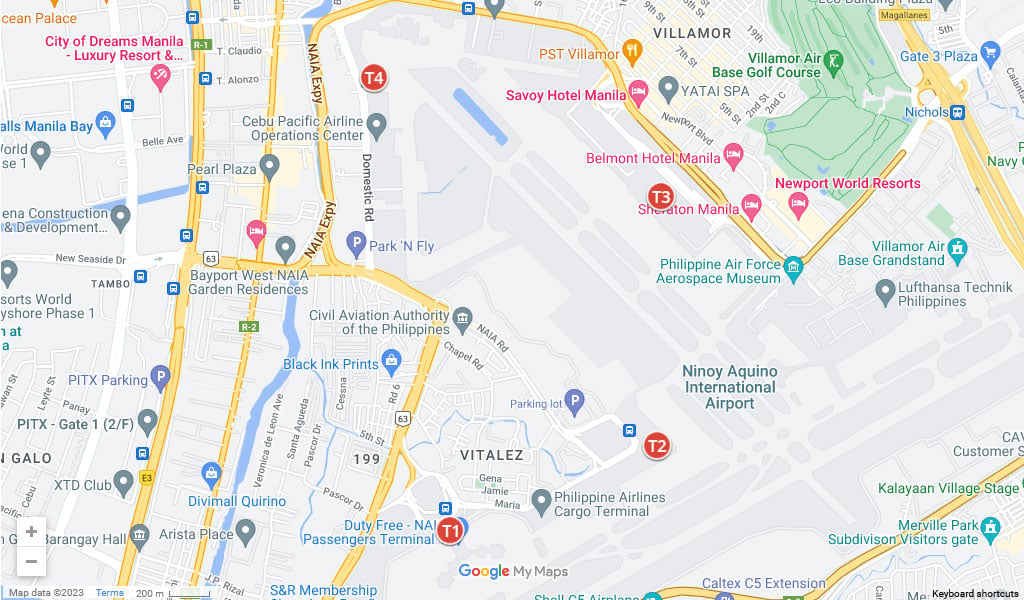
NAIA stands for Ninoy Aquino International Airport. It has been voted the world’s worst airport in 2011 and 2013, but since its P1.3 billion renovation in 2014 it has managed to brush up its reputation somewhat…
It’s now only the 5th worst airport in Asia. Yay! 😀
NAIA consists out of 4 terminals that are up to 4.8 km apart. They all have free WiFi, plus ATMs and money changers throughout their arrival and departure areas. It’s also worth knowing that all applicable airport fees and taxes are included in your ticket price.
I describe each terminal and how to transfer between them below, plus you can see which airlines use which terminals here.
P.S. The only option to sleep in NAIA is currently The Wings Transit Lounge in Terminal 3. If you’d rather stay in accommodation near the airport, see the hotels near NAIA on Agoda.
NAIA Terminal 1
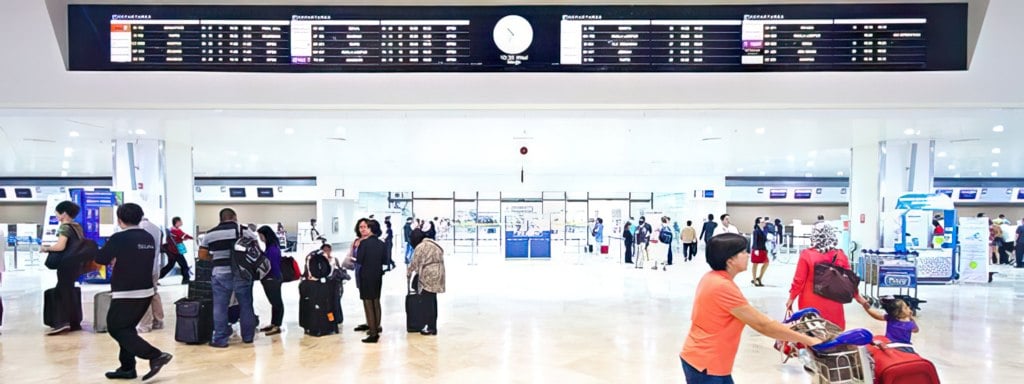
Terminal 1 accommodates most international flights. It has no domestic flights section, so if you have a connecting domestic flight, you have to transfer to another terminal to catch it.
It’s also the terminal that gave Manila Airport the name of being the worst airport in the world, as determined by popular vote. Luckily that changed after the renovation in 2014.
For more in-depth info see this Terminal 1 arrival guide or the departure guide.
NAIA Terminal 2
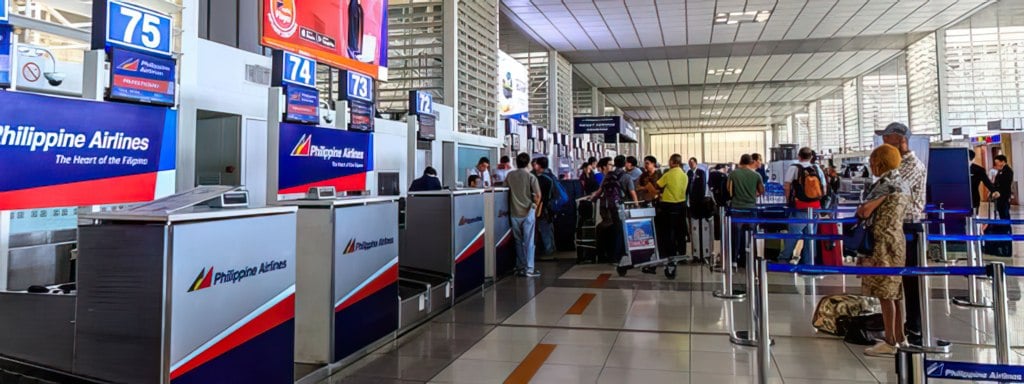
Terminal 2 is used exclusively by Philippine Airlines, for both international and domestic flights. The left half of the building is reserved for international flights, and the right is used for domestic flights.
It’s a 2 story building, with arrivals being on the 1st floor, and departures on the 2nd.
For more in-depth info see this Terminal 2 arrival guide or the departure guide.
NAIA Terminal 3
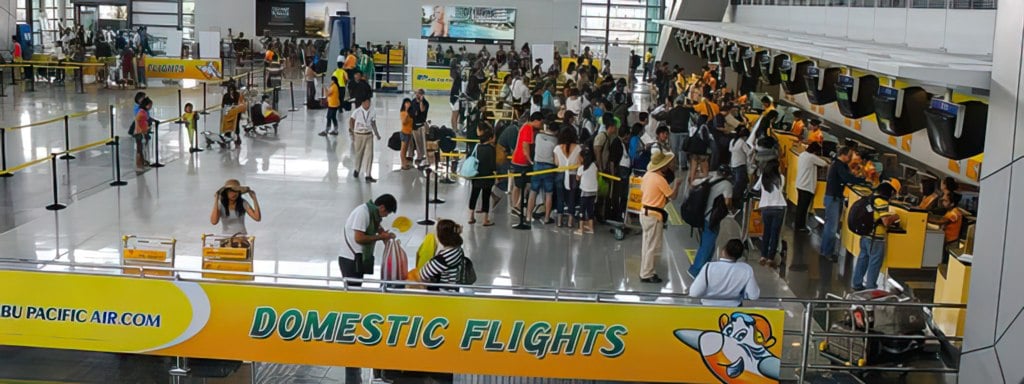
Terminal 3 accommodates both international and domestic flights from various airlines. It’s the biggest of the 4 terminals, and with it being completed in 2008 it’s also the newest.
It’s a 4 story building, with arrivals on the 1st floor and departures on the 3rd. You can shop and grab a bite on the 1st and 4th floor, the latter also has a food court.
For more in-depth info see this Terminal 3 arrival guide or the departure guide.
NAIA Terminal 4

Terminal 4 is used exclusively for domestic flights, with mostly small propeller airplanes. It’s the smallest of the 4 terminals, and with it being built in 1948 it’s also the oldest.
It’s a pretty simple and straight forward building for an airport terminal.
For more in-depth info see this Terminal 4 arrival guide or the departure guide.
How To Transfer Between Terminals
When you need to transfer between terminals, I recommend you schedule in 3 to 4 hours. You can make it in less time, but if there’s a delay, you could end up missing your connecting flight.
For transport it’s best to use an airside shuttle bus, they are free when you have a connecting flight ticket to show. Plus they pass through airport grounds, so you won’t have to deal with traffic congestion. In contrast, taxis have to use public roads.
The shuttle buses operate around the clock and they run every 30 minutes from 5am to 11pm. During the remaining hours they run every 50 minutes.
Finding the shuttle buses is easy, just look for the big shuttle bus signs inside the terminals and follow the directions.
For additional info on transfer times and shuttle buses see this terminal transfer guide.
Taxis & How To Avoid Getting Scammed
There are 3 kinds of taxis at Manila Airport: the yellow metered airport taxis, the white metered city taxis, and the fixed rate coupon taxis.
There are also touts offering private car hires at inflated prices. They try to take advantage of first time visitors, and people that are tired of waiting for a taxi. Please don’t use these, because they are unregulated and they can scam or rob you.
Taxis can scam you too though. Common scams are demanding more money than what the meter shows, and not turning on the meter at all and asking for an arbitrary amount.
To avoid getting scammed, ask the driver if he’ll use the meter before you get in. If he doesn’t agree, look for another taxi. Also, wait to pay the driver until you’ve gotten your luggage out of the trunk to minimize the chance of him driving off with your luggage.
With those warnings out of the way, here’s more info on the 3 types of taxis…
Yellow Metered Airport Taxis
These are the taxis that I recommend to most people, especially when you’re a first time visitor, are traveling alone or at night. The yellow taxis have a good balance between price and safety. They are safer than white taxis because their drivers are more easily held accountable.
Their start fee is ₱70 (~$1.40) which includes the first 500 meters. After that it’s ₱4 (~$0.08) for every 300 meters, and ₱4 for every 2 minutes waiting or standing still.
White Metered City Taxis
These are the cheapest taxis. Just be aware that they’re less easily held accountable, so they’re more inclined to scam you. If you’re informed and confident then getting a white taxi is fine though. As a preventive measure it can be a good idea to make a note of their taxi number.
Their start fee is ₱40 (~$0.80) which includes the first 500 meters. After that it’s ₱3.5 (~$0.07) for every 300 meters, and ₱3.5 for every 2 minutes waiting or standing still.
Fixed Rate Coupon Taxis
The fixed rate coupon taxis are a bit of a rip-off, considering they are about 3 times the price of a metered taxi with average traffic. You do have the advantage of knowing the price in advance though, and there’s usually not much of a waiting line. So they can be a good option when traffic is bad, or when you don’t want to wait.
The fixed rate for each destination is displayed on a big blue board in the coupon taxi area.
P.S. Despite all the warnings, most taxi drivers are good people, and they don’t earn much. So if a driver is friendly and honest with you, please give him a good tip.
How To Catch Uber and Grab Rides
Grab is the easiest ride hailing option for most people, because they have booths at all four terminals. Uber doesn’t have any booths, and there’s no internet outside the terminals. So if you don’t have a mobile internet connection, you need to message or call your Uber driver to specify a place to meet before you leave the terminal.
Where To Stay Overnight

The only option to sleep in NAIA is currently The Wings Transit Lounge in Terminal 3. It’s simple but nice looking. It has a range of things that are designed to make your stay comfortable…
Those things include capsule or bunk beds, showers, a lounge, a spa, and a computer corner. It’s also conveniently located on the 4th floor, which is the shopping and food area.
If you’d rather stay in a hotel near the airport, then please see the hotels near NAIA on Agoda, or read my guide to the 9 best hotels near NAIA terminal 1, 2, 3 and 4.
If you want to take the time to experience Manila on the other hand, I recommend you stay in the Makati region. It’s a 30 minute drive from the airport, but well worth it if you want to spend some time exploring the city. Makati is a relatively safe, clean and modern area.
My recommended hotel in Makati is Red Planet. Its beds are super comfy and it’s located near the heart of Makati, just a stone’s throw away from Century City mall.
If you’re not staying overnight, but you still need to wait, then you could choose to spend your time in one of these lounges for some extra comfort.
Conclusion
Traveling through NAIA can seem confusing and intimidating at first, but when you’re informed and prepared it becomes a smooth and painless process, most of the time.
To summarize: if you need to transfer between terminals, using an airside shuttle bus is the quickest way. As for transport into Manila, yellow taxis and Grab rides will be the best option for most people.
When you stay overnight, your best option depends on whether you want to stay in or near the airport, or if you want to take some time exploring the city.
